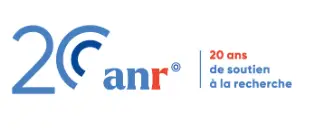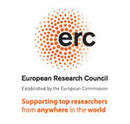Organizing Committee
Comité d’organisation
Marie Albenque (CNRS, Université Paris Cité)
Anna Ben Hamou (Sorbonne Université)
Guillaume Chapuy (CNRS, Université Paris Cité)
Guillem Perarnau (Polytechnic University of Catalonia)
Random discrete structures, such as graphs, trees, or maps, are of interest to many fields of science, from theoretical computer science to matematical physics, and of course mathematics. They are fundamental objects of study in probability theory as well as in combinatorics.
The interaction between the viewpoints of these different fields have proved extremely fruitful in the past, from the construction of Brownian maps, to the use of tau-functions in enumerative combinatorics, or the key role played by curvature in the recent study of Markov chains.
In the last ten years, the ramifications and interactions of these viewpoints have only grown. Among active domains at this interface, one can cite the following:
- Enumerative combinatorics, Maps on surfaces.
- Random trees and random processes on graphs.
- Markov chains and their mixing times.
- Real-world applications of these structures.
Resolutely “open” and geared towards creativity, the workshop will bring together international scientists around a program addressing various models of discrete randomness of a highly combinatorial nature, where the combination of methods or intuitions from enumeration, probability, or computer science could prove crucial. Open problem sessions will invite all participants to actively participate in a collective moment of learning, and possibly foster emerging collaborations.
Les structures discrètes aléatoires, telles que les graphes, les arbres ou les cartes, intéressent de nombreux domaines scientifiques, de l’informatique théorique à la physique mathématique, en passant bien sûr par les mathématiques. Ce sont des objets d’étude fondamentaux en théorie des probabilités et en combinatoire.
L’interaction entre les points de vue de ces différents domaines s’est révélée extrêmement fructueuse dans le passé, qu’il s’agisse de la construction des cartes browniennes, de l’utilisation des fonctions tau en combinatoire énumérative ou du rôle clé joué par la courbure dans l’étude récente des chaînes de Markov.
Au cours des dix dernières années, les ramifications et les interactions de ces points de vue n’ont fait que croître. Parmi les domaines actifs à cette interface, on peut citer les suivants :
- Combinatoire énumérative, cartes sur des surfaces.
- Arbres aléatoires et processus aléatoires sur les graphes.
- Chaînes de Markov et leurs temps de mélange.
- Applications de ces structures dans le monde réel.
Résolument « ouvert » et tourné vers la créativité, l’atelier réunira des scientifiques internationaux autour d’un programme portant sur divers modèles d’aléa discret de nature hautement combinatoire, où la combinaison de méthodes ou d’intuitions issues du dénombrement, des probabilités ou de l’informatique pourrait s’avérer cruciale. Des sessions de problèmes ouverts inviteront tous les participants à prendre part activement à un moment d’apprentissage collectif et à favoriser éventuellement des collaborations émergentes.
LECTURES
Eleanor Archer (Université Paris-Dauphine) Processes on Random Graphs
Thomas Budzinski (UMPA, ENS Lyon) The longest increasing subsequence of Brownian separable permutons
Alessandra Caraceni (Normal School of Pisa) Mixing times
Valentin Féray (IECN, Université de Lorraine) Random Young diagrams and tableaux
David Saulpic (IRIF, Univ. Paris cité) Partition of planar maps, political redistricting and gerrymandering
SPONSORS




